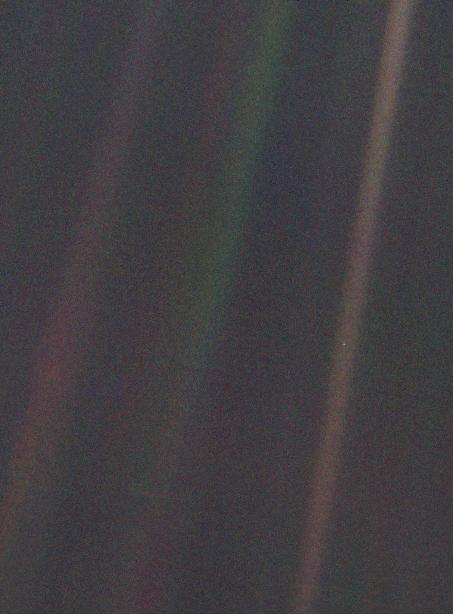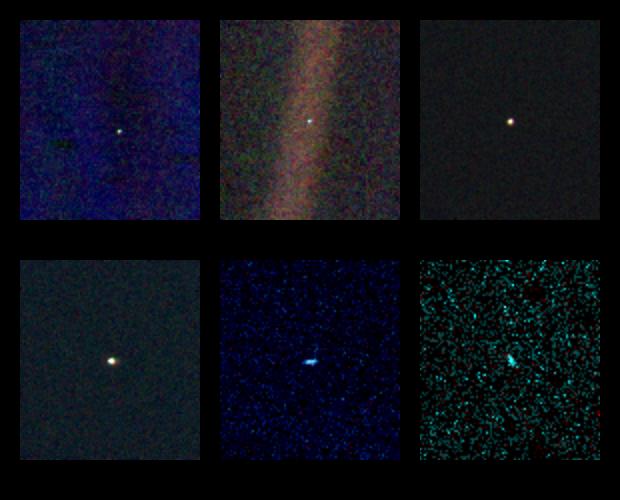It looks like you're using an Ad Blocker.
Please white-list or disable AboveTopSecret.com in your ad-blocking tool.
Thank you.
Some features of ATS will be disabled while you continue to use an ad-blocker.
1
share:
not sure if this is the right forum but, the tiny blue dot image.
If this image was taken from so far out. Shouldn't we be seeing other planets etc in this image? and what is the red band of light our planet is in and the other bands of light for that matter?
sorry, i would have posted the image but can't seem to figure out how to, not hard to find the image tho.
If this image was taken from so far out. Shouldn't we be seeing other planets etc in this image? and what is the red band of light our planet is in and the other bands of light for that matter?
sorry, i would have posted the image but can't seem to figure out how to, not hard to find the image tho.
originally posted by: BlueJacket
a reply to: dan121212
Check out what this astronaut has said about that topic:
briankoberlein.com...
I once did a thread about the 25th Anniversary of the original "Pale Blue Dot" image taken by Voyager in 1990
www.abovetopsecret.com...
Here is that image. I'm not sure if this is the same "Blue Dot" image you were talking about, because others have been taken since. In the picture below, Earth is the pale dot of light about half way up in the brownish band on the right. :
 Earth's apparent size is less than a pixel; the bands are caused by sunlight scattered by the
camera's optics.
Earth's apparent size is less than a pixel; the bands are caused by sunlight scattered by the
camera's optics.
As for the other planets, they may not have all been in the same part of the sky as the Earth was in that image. Consider when we look at our sky: The planets are usually spread about the ecliptic and only often near enough to each other to both be in the same image -- especially a magnified image.
In that same old thread I posted above, I also included a "family portrait" of the other planets that Voyager was able to see at around that same time:
 From left to right, top to bottom: Venus, Earth, Jupiter, and Saturn, Uranus, Neptune. Mercury is
too close to the sun to be seen. Mars was not detectable by the Voyager cameras due to scattered sunlight in the optics, and Pluto was not included in
the mosaic because of its small size and distance from the sun.
From left to right, top to bottom: Venus, Earth, Jupiter, and Saturn, Uranus, Neptune. Mercury is
too close to the sun to be seen. Mars was not detectable by the Voyager cameras due to scattered sunlight in the optics, and Pluto was not included in
the mosaic because of its small size and distance from the sun.
www.abovetopsecret.com...
Here is that image. I'm not sure if this is the same "Blue Dot" image you were talking about, because others have been taken since. In the picture below, Earth is the pale dot of light about half way up in the brownish band on the right. :

As for the other planets, they may not have all been in the same part of the sky as the Earth was in that image. Consider when we look at our sky: The planets are usually spread about the ecliptic and only often near enough to each other to both be in the same image -- especially a magnified image.
In that same old thread I posted above, I also included a "family portrait" of the other planets that Voyager was able to see at around that same time:

edit on 2/12/2017 by Soylent Green Is People because: (no reason given)
I wonder, though, in the image that was composed of pixels in the first place, how did they determine than the Earth was "less than a pixel"?
a reply to: wildespace
The statement is based on the angular size that Earth would be from that difference. That would cover less than one pixel. However, at least one pixel will be affected by the light. You can't have half a pixel lighting up.
The statement is based on the angular size that Earth would be from that difference. That would cover less than one pixel. However, at least one pixel will be affected by the light. You can't have half a pixel lighting up.
edit on 12/3/2017 by Phage because: (no reason given)
a reply to: wildespace
I guess it depends on how you define 'pixel' and where the image is viewed. The original image wasn't digital as such, as far as I can tell the camera was a vidicon tube similar to those used in early weather satellites. Modern digitial displays can have sub-pixels, with each pixel composed of three elements (RGB), though by the strict sense of the definition these are (as the smallest component of the display) actually pixels!
I suspect it's just a bit of "wow this is a really small dot" kind of description.
I guess it depends on how you define 'pixel' and where the image is viewed. The original image wasn't digital as such, as far as I can tell the camera was a vidicon tube similar to those used in early weather satellites. Modern digitial displays can have sub-pixels, with each pixel composed of three elements (RGB), though by the strict sense of the definition these are (as the smallest component of the display) actually pixels!
I suspect it's just a bit of "wow this is a really small dot" kind of description.
originally posted by: Phage
a reply to: wildespace
The statement is based on the angular size that Earth would be from that difference. That would cover less than one pixel. However, at least one pixel will be affected by the light. You can't have half a pixel lighting up.
And in addition to the discussion of the vidicon tech differences from modern CCDs, even if earth were a true point-light source it would still light up more than one pixel due to the point spread function determined by the optics.
www.zeiss.com...
It's one of the easiest ways of distinguishing cosmic ray strikes on CCDs from true detections of light; cosmic ray strikes do not form point spread functions, they have very sharp edges where they're inducing charge in a pixel but potentially leaving neighboring pixels completely unaffected.
new topics
-
Watts home paranormal activity
Paranormal Studies: 3 hours ago -
So, what is really going on in South Korea ?
World War Three: 4 hours ago -
Congress Says the FBI is Covering Up Vital Info on the Jan 5th 2021 D.C. Pipe Bombs at RNC-DNC.
Political Conspiracies: 4 hours ago -
The trial on kids was stopped
Medical Issues & Conspiracies: 7 hours ago -
Orbs Appear And Form Triangle On Live Cam.
Aliens and UFOs: 9 hours ago -
Biden Has New Bizarre Injuries to His Face
Politicians & People: 10 hours ago -
Something is not adding up in regards to the H-1B commotion
General Conspiracies: 11 hours ago -
Elon Musk Calls for Tommy Robinson to be Freed - and Takes a Dig at Starmer
Politicians & People: 11 hours ago
top topics
-
Biden to award Presidential Citizens Medal to Liz Cheney and Bennie Thompson
US Political Madness: 12 hours ago, 11 flags -
Biden Has New Bizarre Injuries to His Face
Politicians & People: 10 hours ago, 11 flags -
Congress Says the FBI is Covering Up Vital Info on the Jan 5th 2021 D.C. Pipe Bombs at RNC-DNC.
Political Conspiracies: 4 hours ago, 9 flags -
The trial on kids was stopped
Medical Issues & Conspiracies: 7 hours ago, 9 flags -
Just learned a really helpful trick for internet searches
Computer Help: 17 hours ago, 7 flags -
Orbs Appear And Form Triangle On Live Cam.
Aliens and UFOs: 9 hours ago, 6 flags -
Something is not adding up in regards to the H-1B commotion
General Conspiracies: 11 hours ago, 5 flags -
Elon Musk Calls for Tommy Robinson to be Freed - and Takes a Dig at Starmer
Politicians & People: 11 hours ago, 5 flags -
So, what is really going on in South Korea ?
World War Three: 4 hours ago, 5 flags -
Watts home paranormal activity
Paranormal Studies: 3 hours ago, 3 flags
active topics
-
Congress Says the FBI is Covering Up Vital Info on the Jan 5th 2021 D.C. Pipe Bombs at RNC-DNC.
Political Conspiracies • 20 • : WeMustCare -
Tesla Cybertruck Explodes in Front of Trump Hotel in Las Vegas
Mainstream News • 139 • : Flyingclaydisk -
The trial on kids was stopped
Medical Issues & Conspiracies • 10 • : Irishhaf -
-@TH3WH17ERABB17- -Q- ---TIME TO SHOW THE WORLD--- -Part- --44--
Dissecting Disinformation • 3905 • : duncanagain -
Ukraine halts transit of Russian gas to Europe after a prewar deal expired
Political Conspiracies • 114 • : FlatBatt -
Biden to award Presidential Citizens Medal to Liz Cheney and Bennie Thompson
US Political Madness • 14 • : WeMustCare -
So, what is really going on in South Korea ?
World War Three • 6 • : CriticalStinker -
The C.D.C. Says There Was NO INFLUENZA Worth Reporting for the 2020-2021 Flu Season.
Diseases and Pandemics • 98 • : WeMustCare -
Strange fog all over the northern hemisphere
General Conspiracies • 45 • : TheMisguidedAngel -
Mood Music Part VI
Music • 3775 • : Skinnerbot
1
